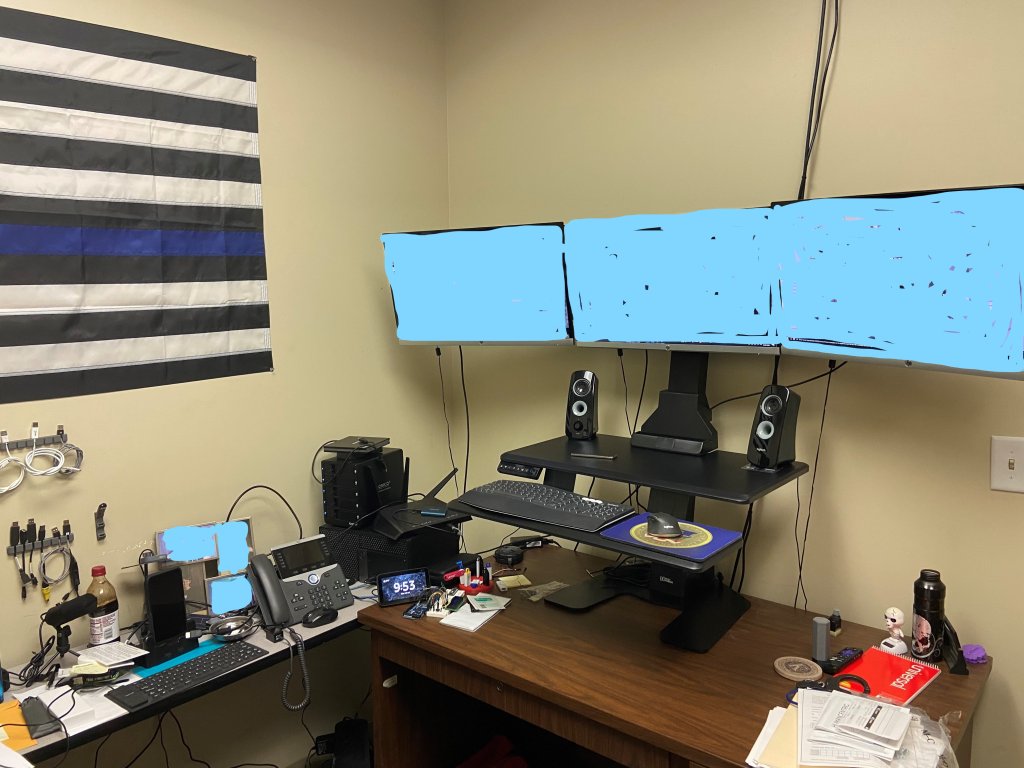
Uncovering the “Who-Done-It” Truth: How Digital Forensics Empowered Lee County Sheriff’s Office in Homicide Investigations
“The smartphone is the modern-day diary.” – Rob Kloeti, a Digital Forensic Investigator for the Lee County Sheriff’s Office in Alabama

Lee County Sheriff’s Office Badge – Source: Cellebrite
In an age where technology is a constant in every aspect of daily life, it should be no surprise that crime has also taken on a digital dimension. As criminals adapt to the digital age, there has been an exponential boom in the prevalence of digital evidence.
However, law enforcement agencies across the country have been caught unprepared for this surge in data as they lack the digital forensic tools and expertise to combat the sheer volume of digital evidence.
For the Lee County Sheriff’s Office in Alabama, they recognized this gap and took the necessary steps to keep pace with modern crime in 2016. According to Rob Kloeti, a Digital Forensic Investigator for the agency, “The smartphone is the modern-day diary.”
“Law enforcement has always been in search of evidence to prove a crime was committed. Since now we live in a digital age, it makes sense to collect digital evidence. It is almost impossible to do without having the tools necessary. To collect this digital evidence in a fast and efficient, yet forensic way, you must have the tools and training necessary to do the job,” he shared.

Lee County Sheriff Patrol Vehicle – Source: Cellebrite
Getting Ahead of the Curve
In 2016, the Lee County Sheriff’s Office experienced a glimpse of what was to come. “We received 10 homicide cases. Five of those cases were “who-done-it” cases. There were no suspects,” Inv. Kloeti said. Using digital forensics including call detail records, tower dumps, and location information from cellphones, all cases were solved with arrests.
That signaled the beginning of an era, the challenges for law enforcement agencies to collect, manage, analyze, and share data were growing.
Private companies manufacturing the devices used for criminal activities are constantly innovating on the security front, making the process of lawful extraction increasingly difficult. Even with the evidence on hand, analyzing data is time-consuming, requiring investigators to process hundreds or thousands of gigabytes of data. Furthermore, the size of the evidence pool hinders collaboration between agencies due to file transfer times.
“Times are changing, and we need to change with the times. This is a digital world today and the world is digitally run,” Inv. Kloeti remarked. By embracing change, the department saw a higher solvability rate in all crimes with digital evidence as their capability grew. Today, the digital forensics department consists of two Digital Forensic Investigators using Cellebrite Premium-as-a-Service and UFED as part of their investigative workflow.

Lee County Sheriff Patrol Digital Forensics Lab – Source: Cellebrite
Turning to the Digital World for Answers in Modern Homicide Investigation
To further illustrate how indispensable these capabilities are, Inv. Kloeti refers to two homicide cases that could not be solved without the help of digital forensics.
The Lee County Sheriff’s Office was alerted to a homicide case that occurred at the victim’s residence. It was also discovered that several of the victim’s belongings were stolen, including their phone, television, and car. As part of the on-site processing, a DVR was collected to determine the timeframe of when the murder took place.
Through a combination of DVR analysis, phone records, and location data from the victim’s phone number, Inv. Kloeti was able to form a timeline of the victim’s movements throughout the final hours of their life. This led to a string of connections to several suspects including an arrest that took place a month after the murder.
During interviews with the suspects, their statements matched the location data from cell phone tracking. Ultimately, the victim’s possessions were recovered, and DNA evidence led to the successful conviction of all parties involved.
In another case, an unidentified body was discovered in the wood line by an intersection with a gunshot wound to the back of the victim’s head. There were no suspects or witnesses. However, a cell phone belonging to the victim was discovered nearby. Call detail records, tower dumps, and forensics were conducted. It was revealed that the victim was a taxi driver, their vehicle was located burned to the ground in a different state.
Further investigation into the phone and call detail records of the victim uncovered a suspicious phone number. Tracking of the phone placed the suspect at the location of the body and burned car. In the end, the suspect and an additional accomplice were successfully charged.

Lee County Administration and Detention Center – Source: Cellebrite
Giving the Right People the Right Tools
“In the last year, we did approximately 600 exams (devices) with a volume of around 80 terabytes. Those numbers increase every year,” according to Inv. Kloeti. Forensic tools are a staple of digital forensics. Without them, the constraints placed on law enforcement agencies would be devastating.

Lee County Sheriff’s Office Patrol Vehicle – Source: Cellebrite
Inv. Kloeti stressed the importance of preparedness when it comes to adopting and implementing digital forensics. “First, they must budget for the position, equipment, and training. It’s not cheap and if you can’t provide for your employees, then you critically limit their ability,” he remarked. “Meanwhile, they need to find the right person for the job. It takes a certain mindset of an intelligent person.”
The key is training staff and keeping them up-to-date with the best practices. “Once the trained personnel start collecting digital evidence, then you will see an increase in solved crimes in a fast and efficient manner,” said Inv. Kloeti.
When asked where he sees agencies in five years regarding digital transformation, he had this to say, “Everything is going paperless. There will come a time when every investigator needs to be cross-trained in digital forensics. That’s how much it will transform and take over.”
Furthermore, stating “As I said previously, every crime has a digital element in the evidence. If you’re not budgeting for digital transformation, you’re doing your community a disservice. More crimes will be solved today with digital forensics.”

Lee County Sheriff’s Office Patrol Vehicle – Source: Cellebrite
